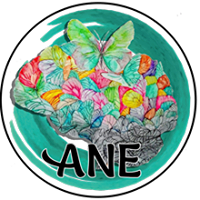Beckett
At age 22 months, he was a typical toddler boy. Running, jumping, starting to communicate many words, feed himself, and play/cause mischief with his older sister Mila.


When waking Beckett to go to the hospital after dinner, he showed signs of a seizure (body tightening, clenched fists, crossed eyes). We rushed to the ER at Lurie’s Children’s Hospital in Chicago. It was packed with other sick children in the waiting room. Beckett continued to show signs of seizures as we waited for about two hours for him to have his vitals checked. At that time, a doctor witnessed his seizure-like symptoms and he was rushed into triage. He was given emergency seizure medications. Though his vitals were good, he was not responding to external stimuli. Then he was tested for a panel of viruses, given a urinary test, ultrasound, rapid MRI, spinal tap, and hooked up to an EEG scan for twenty four hours. Early Wednesday morning, his MRI suggested a diagnosis of ADEM (which was not the case). ADEM is an autoimmune condition characterized by a brief but intense attack on the brain and spinal cord. ADEM and ANE have similar symptoms but ADEM usually has a full recovery whereas an ANE diagnosis has much more precarious outlook.
Beckett was moved from the ER to the ICU where he started steroid treatments to reduce inflammation in his brain. At this point, he was not having seizures but he was also not showing much movement or communication at all. We were frightened and sad- missing our boy and his goofy personality.
On Thursday morning, Beckett showed signs of progress, giving us hope that he would come back to us. He opened his eyes, rolled over, and said “mama.” A doctor suggested that there may be more to Beckett’s diagnosis and he was given a full 90 minute detailed MRI. The next morning, they revealed the results from Beckett’s MRI, suggesting he has ANE. We were terrified, heartbroken, and had so many unanswered questions.
Beckett was moved to the neurology floor and spent the next week working with physical, speech, and occupational therapists. He had a feeding tube for his nutrition as he could not swallow food properly on his own. Over the course of that week in recovery, Beckett would have some very alert moments mixed with longer periods of lethargy. For his mom and dad, our emotions were very much on a roller coaster these first few weeks in the hospital. We journaled every important moment and leaned on each other for support. Beckett was given a genetic test that would later confirm his diagnosis of ANE.
Beckett was evaluated and transferred to Shirley Ryan Ability Lab on October 1, 2022. He spent two weeks there completing three hours of therapy per day. He made improvements each day at the inpatient facility. When we left, he was able to walk on his own, play with toys, and lift himself up from a seated position. He was still weak and unstable when he came home. He also regained his speech last, but he was eventually able to say all of his words and do all of the things that he could from before his episode. His big sister was so excited to have him home and seeing them play together lifted all of our spirits. Beckett continued outpatient therapy at Shriners Children’s Hospital for the next two months.
On Halloween, about a month after his genetic testing was taken, we received the call with the results from Beckett’s genetic testing. He has a mutation of the RANBP2 gene that has shown to be connected with ANE. Once again, we felt heartbroken, scared, and anxious about the future.


